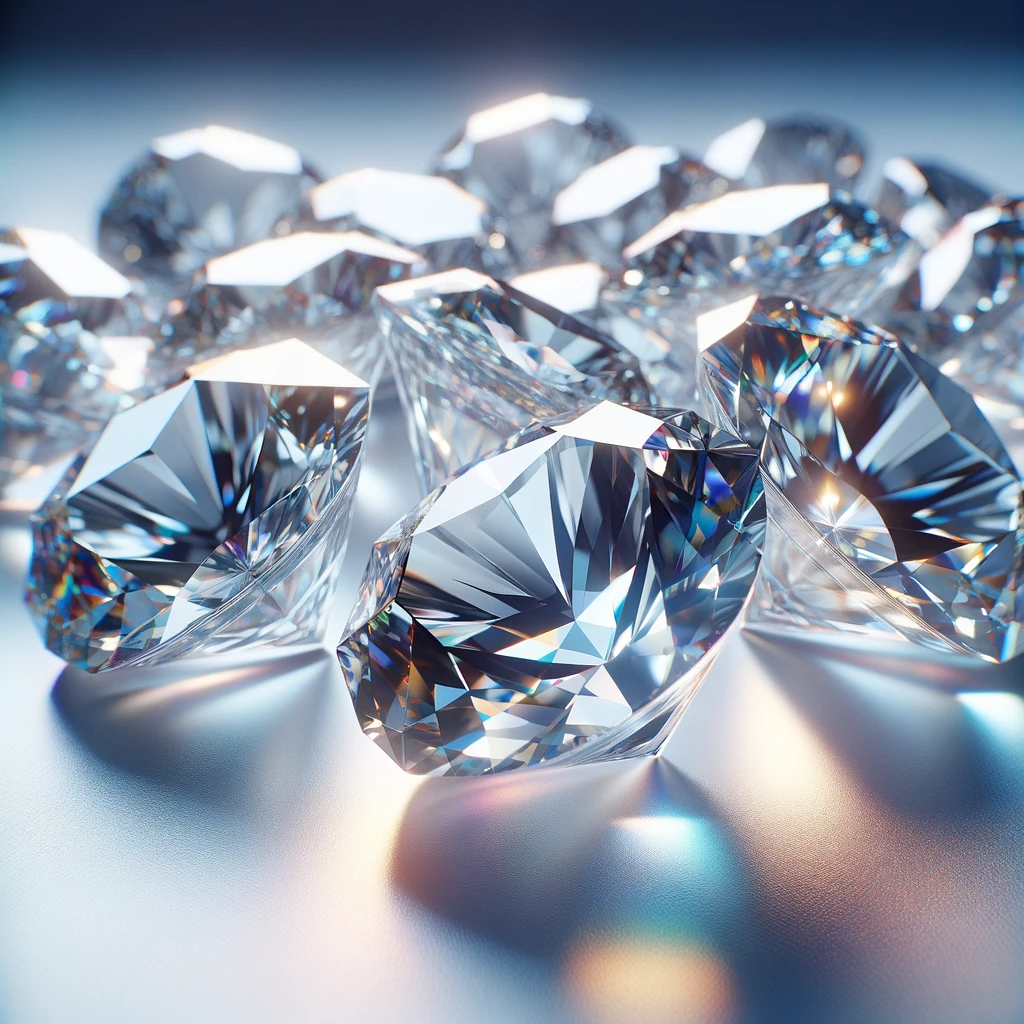The Pros and Cons of White Sapphire and Lab-Grown Diamonds
by Janel · December 16, 2024

When it comes to selecting the perfect gemstone for an engagement ring, wedding band, or other fine jewelry, many people weigh the pros and cons of white sapphire and lab-grown diamonds. These two gemstones offer distinct qualities, aesthetic appeal, and value that cater to different preferences and budgets. Understanding their advantages and disadvantages can help you make an informed decision that aligns with your style and values.
The Appeal of White Sapphire
White sapphire is a natural or synthetic variety of the corundum mineral family. One of the major pros of white sapphire is its affordability compared to diamonds. It offers a brilliant appearance at a fraction of the cost, making it a popular choice for budget-conscious buyers. Additionally, white sapphires are durable, ranking 9 on the Mohs scale, which makes them suitable for everyday wear.
However, one of the notable cons of white sapphire is its lack of brilliance when compared to a diamond. White sapphire often has a cloudier or milkier appearance, which can reduce its sparkle. Despite this, it remains a viable option for those who value durability and a diamond-like aesthetic without the high price tag.
Lab-Grown Diamonds: A Modern Marvel
Lab-grown diamonds, on the other hand, are created in controlled environments using advanced technology. They are chemically, physically, and optically identical to natural diamonds. One of the key pros of lab-grown diamonds is their ethical sourcing. Unlike mined diamonds, lab-grown options are free from the environmental and social issues associated with traditional mining practices.
Another significant advantage of lab-grown diamonds is their affordability. While they are typically less expensive than natural diamonds, they retain the same brilliance and fire. However, a potential drawback is the perception that they are not as “rare” or “special” as natural diamonds. For some buyers, the uniqueness of a naturally mined diamond holds sentimental value that cannot be replicated in a laboratory.
Durability and Maintenance
When considering the pros and cons of white sapphire and lab-grown diamonds, durability plays a vital role. White sapphire is slightly less hard than a diamond, which means it can develop scratches or chips over time with regular wear. In contrast, lab-grown diamonds are virtually indestructible, ranking 10 on the Mohs scale. This makes them a long-lasting choice for everyday jewelry.
Maintenance is another factor to consider. White sapphire may require more frequent cleaning to maintain its luster, as it tends to attract dirt and oils. Lab-grown diamonds, on the other hand, retain their sparkle with minimal upkeep, making them a more practical option for busy individuals.
Environmental and Ethical Considerations
In recent years, the ethical and environmental implications of gemstone sourcing have gained prominence. This is where the pros of lab-grown diamonds truly shine. Because they are created in controlled environments, lab grown diamonds have a significantly smaller carbon footprint compared to mined diamonds. They do not contribute to the destruction of ecosystems or the exploitation of labor.
While white sapphires can also be ethically sourced, their mining practices are not always as transparent or sustainable as the production of lab-grown diamonds. Choosing a lab-grown diamond allows buyers to make an environmentally conscious decision without compromising on quality or beauty.
Aesthetic Differences
When comparing the pros and cons of white sapphire with lab-grown diamonds, the aesthetic differences are often a decisive factor. White sapphires exhibit a softer glow that may appeal to individuals seeking a subtle and understated look. However, their brilliance is less dazzling compared to diamonds, which may not suit those desiring maximum sparkle.
In contrast, lab-grown diamonds offer the same brilliance, fire, and scintillation as natural diamonds. This makes them ideal for individuals who prioritize a classic and timeless appearance in their jewelry. Additionally, lab-grown diamonds come in a variety of shapes and sizes, offering greater versatility in design.
Cost Comparison
Cost is a critical consideration for many buyers. One of the most compelling pros of white sapphire is its affordability. It provides a cost-effective alternative to diamonds, allowing individuals to achieve a luxurious look without exceeding their budget.
Lab-grown diamonds, while more expensive than white sapphires, are still a budget-friendly option compared to natural diamonds. They offer the prestige and brilliance of a diamond without the steep price tag, making them a middle-ground choice for those who want the best of both worlds.+
Discover the sparkle at novitadiamonds.com Your Trusted Diamond Jewelry. Explore our exclusive diamond jewelry collection, special offers, and more. Visit now and find your perfect piece of elegance.
Personal Preferences and Values
Ultimately, the decision between white sapphire and lab-grown diamonds comes down to personal preferences and values. If you prioritize affordability and durability, white sapphire may be the right choice. However, if you seek a gemstone with unparalleled brilliance, ethical sourcing, and long-term value, lab-grown diamonds are hard to beat.
Both options provide unique benefits, and understanding the pros and cons of white sapphire and lab-grown diamonds allows you to select the gemstone that resonates with your aesthetic and ethical priorities.





